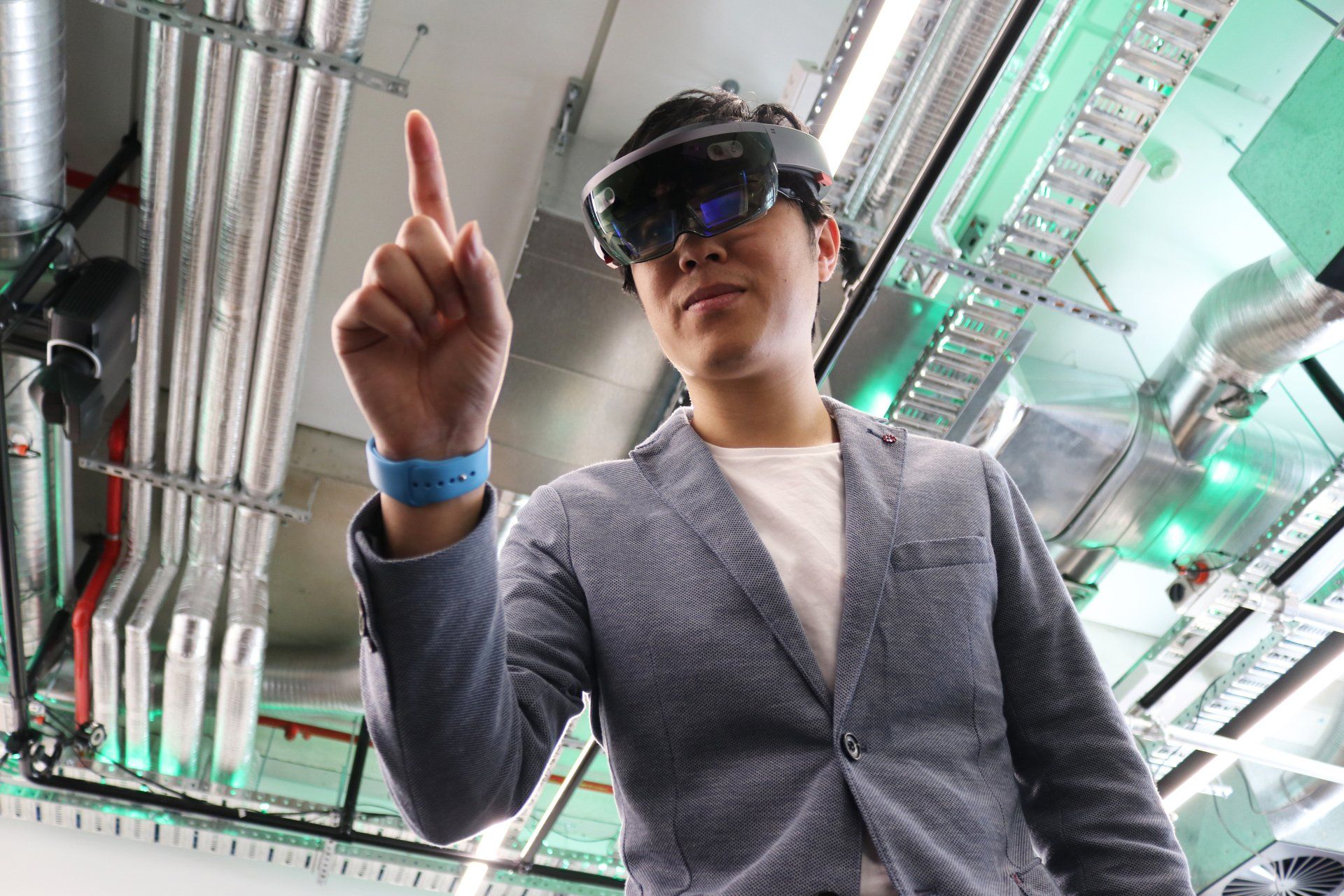1MG FlippingBooks
Prawn farming goes digital
Aquaculture is undergoing a transformation globally, but there’s a substantial gap between how much is harvested and how much could be
CSIRO researchers are using augmented reality, sensor technology and next generation data interaction to help inform prawn farmers’ decisions, increasing their yield.
By combining wearable goggles with water quality information already being collected, farmers can look at the pools of water and instantly see the vital information they need, with the information ‘augmented’ on top of reality as an overlay.
In real-time, farmers can monitor water quality parameters like dissolved oxygen and pH levels simply by looking at the tanks, and interact with the information using hand gestures.
The technology was developed by CSIRO’s Digiscape Future Science Platform using the power of Data61’s data monitoring and analysis platform Senaps.
The technology is wearable and hands-free, so farmers can access it while they’re walking around and managing the prawn ponds.
In an interview with Innovation Intelligence , the project leader, Dr Mingzi Xi, discussed how the technology could change aquaculture.
“There’s a significant delay between when the data is captured and when the decision is made, and the prawn ponds are a dynamic environment. In two hours, the conditions can change from optimal situation to a threatening situation, and if you can’t make an informed decision in a timely matter that can potentially be a great financial loss.”
Water quality is an important constant concern for prawn farmers, as prawn ponds often gather nutrients, bacterial and algal growth from excess feed and waste from the prawns themselves which can produce ammonia, and lower oxygen levels at night.
“Prawn farmers tell us that they don’t actually farm prawns, they farm water quality,” Dr Xi said.
Water quality monitoring is labour intensive, with significant delays between the measurements and being able to see important trends in the data.
“The majority of prawn farming or aquaculture is quite labour intensive, partly because of the harsh environment. They must use a handheld floating device which gives them the most accurate results, measure water conditions, and then record the data, and they must do this across the entire farm. Sometimes this can be six hours, then they bring this back to the office, and then the decision maker is able to make a decision.”
“This could give them the information they need to better manage animal health and feed inputs, for example, and even share the visuals in real time with managers in the office or external experts for fast input,” Dr Xi said.
The initial run for the project is three years, with the researchers already being about 19 months in. CSIRO has chosen prawn farming as the first agricultural industry to test this technology, with plans to expand into other sectors shortly.
“We’ve started with aquaculture, and afterwards if we’re successful, we’re planning to introduce it to more broader agriculture industry like sugar cane farms.”
“We can see this technology becoming a normal part of farm operations no matter what you farm, as all types of farming become more reliant on gathering and understanding data from sensor technologies,” Dr Xi said.
While the Australian prawn industry is one of the smaller producers in volume in the world, it leads the world in productivity with an average yield of more than 9,000 kg per hectare, according to Australian Prawn Farmers Association (APFA) 2015 report.
In the same report APFA said the Australian prawn farming industry produces in excess of 5,000 tonnes of product annually with a farm gate value estimated to be $87.7 million, providing more than 300 direct jobs.
“We saw there was a need in an industry that is growing very quickly, and there wasn’t enough workforce to support them. This project is about looking into how to help them succeed using artificial intelligence to understand data and how to deliver the projects the right way.”
“As long as humans are involved in the decision making process, this technology can help. We don’t make decisions on behalf of the decision makers, we deliver the information that they need most to make better decisions.”
Prawn farms are currently located in two Australian states; New South Wales and Queensland.
Pacific Reef Fisheries Pty Ltd, a prawn farm operator in northern Queensland, is working with CSIRO to provide real world conditions for testing the system. Dr Xi said that they plan to start their first farm trial there in a few weeks.
Kristian Mulholland, Environmental Manager of the farm said augmented reality had the potential to transform productivity in the aquaculture industry.
“Augmented reality technology could be a huge game changer for our industry to make water quality monitoring so much quicker and easier, all in real time, and bringing a visual aspect of data display to efficiently make more accurate management decisions,” he said.

















